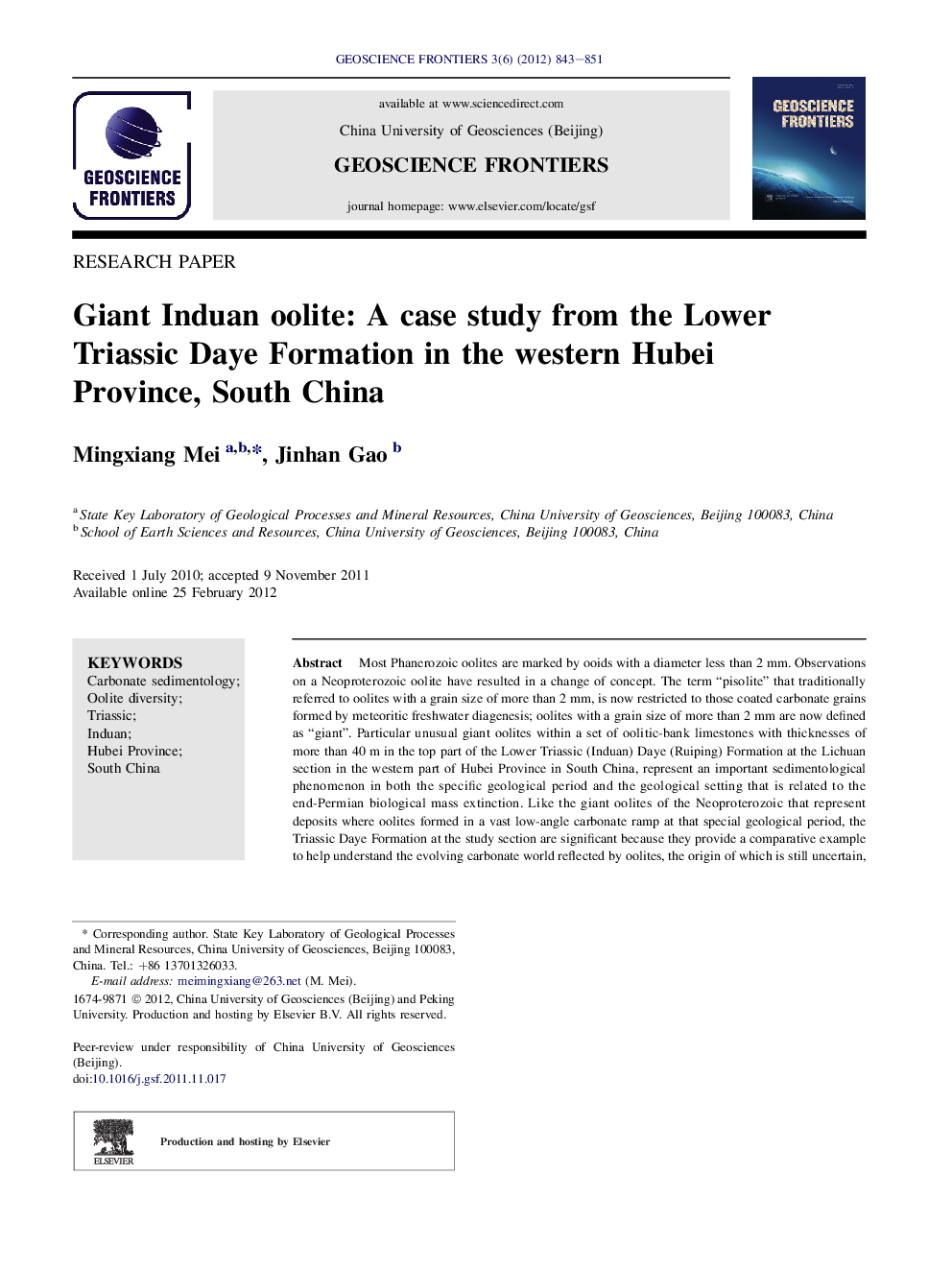| کد مقاله | کد نشریه | سال انتشار | مقاله انگلیسی | نسخه تمام متن |
|---|---|---|---|---|
| 4681776 | 1348873 | 2012 | 9 صفحه PDF | دانلود رایگان |

Most Phanerozoic oolites are marked by ooids with a diameter less than 2 mm. Observations on a Neoproterozoic oolite have resulted in a change of concept. The term “pisolite” that traditionally referred to oolites with a grain size of more than 2 mm, is now restricted to those coated carbonate grains formed by meteoritic freshwater diagenesis; oolites with a grain size of more than 2 mm are now defined as “giant”. Particular unusual giant oolites within a set of oolitic-bank limestones with thicknesses of more than 40 m in the top part of the Lower Triassic (Induan) Daye (Ruiping) Formation at the Lichuan section in the western part of Hubei Province in South China, represent an important sedimentological phenomenon in both the specific geological period and the geological setting that is related to the end-Permian biological mass extinction. Like the giant oolites of the Neoproterozoic that represent deposits where oolites formed in a vast low-angle carbonate ramp at that special geological period, the Triassic Daye Formation at the study section are significant because they provide a comparative example to help understand the evolving carbonate world reflected by oolites, the origin of which is still uncertain, and they give insight into the sedimentation pattern of the desolate sea floor, which resulted from the mass extinction at the turn of the Permian into the Triassic.
Figure optionsDownload as PowerPoint slideHighlights
► We report and characterize the giant oolites from Induan.
► The oolites constitute a new type of anachronistic facies.
► We propose the possibility of a microbial origin for the oolites.
Journal: Geoscience Frontiers - Volume 3, Issue 6, November 2012, Pages 843–851